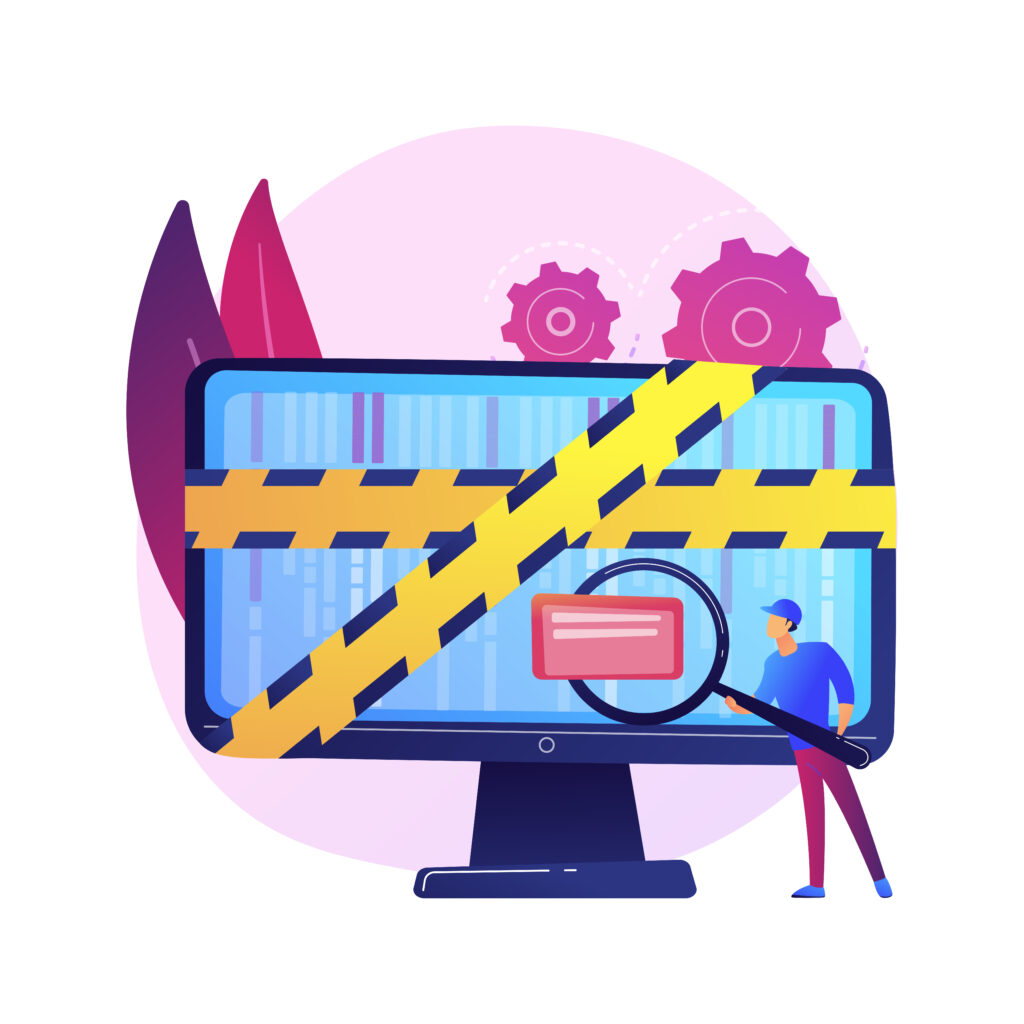Let us take a deep dive into DevSecOps vs SecDevOps. DevSecOps prioritizes early security, promoting collaboration. SecDevOps seamlessly integrates security throughout the development cycle. Explore these approaches shaping the future of secure software practices.
DevSecOps vs SecDevOps
In the initial phases of software development, developers used to construct software based on client requirements and allotted development time. Other aspects of the product life cycle, such as operations, testing, and security, were distinct entities. Consequently, the completion of product development was a time-consuming process.
Nevertheless, there has been a continuous evolution in the software development life cycle. Presently, software product development, product security, and operations collaborate to expedite the delivery of the product to the client.

Although the terms DevSecOps and SecDevOps are closely related, their underlying meanings and priority areas diverge. Both involve the integration of the development team, security team, and operations team, but they adopt different approaches.
What is DevSecOps?
It is a development approach that places primary emphasis on development activities. Within DevSecOps, once coding for the application is complete, the quality assurance team conducts functionality testing.
If the application successfully meets all quality assurance test criteria, it is then subjected to security vulnerability testing by a dedicated cybersecurity team. If vulnerabilities are identified, developers must implement code changes to address them. This process may involve multiple iterations to achieve a flawless, non-vulnerable application.
Ultimately, the application is delivered to the client, and the operations team assumes responsibility for ensuring a seamless transition and ongoing maintenance of the software product.
What are the Advantages of DevSecOps?
This is one of the important factors to consider in DevSecOps vs SecDevOps. This approach offers advantages compared to the waterfall and agile methodologies previously employed in software development lifecycle management (SDLC).
It enhances the security of the application and surpasses both agile and waterfall SDLC in terms of application development. Notably, it provides the capability to swiftly modify the code prior to delivering the product to the client.
What are the Drawbacks of DevSecOps?
Despite the measures taken within the DevSecOps framework to enhance application security and streamline collaboration among various departments, there are still certain challenges faced by DevSecOps.
The deployment time for applications remains extended, as developers might conclude their coding cycle ahead of schedule. Security testing can act as a bottleneck, delaying the delivery of the application to the client due to the identification of security vulnerabilities.

Application security is addressed post the completion of application development, requiring additional efforts for making changes to the application code. Security policies are established and adhered to only during the security testing phase.
What is SecDevOps?
In DevSecOps vs SecDevOps, SecDevOps places security at the forefront of application development, establishing early-stage procedures and policies. Anchored in secure coding practices defined by the security team, developers follow these guidelines, leading to the simultaneous progress of security and development with operations.
The application is segmented into modules, allowing collaboration between the quality assurance and security testing teams to address vulnerabilities early in the process.
Effective communication among departments is crucial, as non-cooperation may revert the process to an agile methodology. Unlike other methodologies, SecDevOps relies on a variety of tools for diverse tests, including source code evaluation, web vulnerability disclosure, and server vulnerability analysis.

SecDevOps enhances overall quality, making application code more secure, and allowing rapid development and deployment of new versions. The methodology supports easy integration of new modules, boosting customer satisfaction and improving application quality ratings.
Practitioners can efficiently make code changes at later stages, and continuous monitoring and correction of security vulnerabilities throughout development result in higher-quality software compared to other approaches.
What are the benefits of SecDevOps in DevSecOps vs SecDevOps?
SecDevOps offers the following advantages:
- Collaboration among developer, security, and operation teams, with shared responsibility for a common goal.
- Implementation of security policies from the planning phase onward, consistently followed throughout the SDLC process.
- Automation of repetitive processes, leading to time savings.
- Adherence to predefined security guidelines by developers during code writing and subsequent changes after testing.
- Ongoing monitoring of the application throughout the development phase.
- Developers function as followers of secure coding practices.
- Creation of an audit trail, with code being audited at each stage to identify vulnerabilities.
- Enhancement of overall application stability.
What are the drawbacks of SecDevOps?
Despite its numerous advantages over traditional methodologies and being the latest model in application development, SecDevOps also presents certain disadvantages:
- Time and Investment in Developer Training: Training developers on secure coding practices and common vulnerabilities is necessary, requiring additional time and investment.
- Extended Application Development Planning: The planning stage for application development may initially be prolonged due to the extensive definition of policies and procedures.
- Third-Party Security Testing: Security testing by a third party is always necessary to avoid conflicts of interest.
- Long-Term Implementation: It is a prolonged process and cannot be swiftly implemented.
SecDevOps vs DevSecOps: Note
SecDevOps and DevSecOps share key characteristics, and their interchangeable use implies no distinctions. Highlighted characteristics of both include:
- Security: Both approaches enhance application security.
- Collaboration: Both require collaboration among development, security, and operations teams.
- Automation: Both automate security testing, integration, and implementation processes.
- Time to Market: DevSecOps and SecDevOps accelerate time-to-market for applications.
- Monitoring: Both involve continuous monitoring.
- Training and Education: Both emphasize the importance of training and education for teams to understand security best practices, stay current on security concerns, and implement corrective measures.
- Testing: Integral to both methodologies, testing starts with threat modeling to identify risks and vulnerabilities, continuing throughout the Software Development Life Cycle (SDLC) to address issues proactively.
SecDevOps vs DevSecOps: A distinction with a difference
There’s an emerging conversation in information technology (IT) surrounding DevSecOps and SecDevOps and what, if anything, defines and distinguishes one from the other.
While the overall goal might be the same — namely, to produce more secure applications — the approaches are quite different in both practice and philosophy.

DevSecOps is primarily concerned with integrating security processes into DevOps cycles while maintaining efficiency, while SecDevOps prioritizes security as much as the actual steps of integrating security into the DevOps process itself.
In essence, SecDevOps means making every decision from a security-first mindset. SecDevOps doesn’t integrate security so much as cultivate a security ethos within every team member to ensure that security becomes a shared responsibility across the entire application lifecycle.
Speed kills
While the concept of SecDevOps seems promising in promoting enhanced security, it does carry unexpected challenges. This is partly due to the evolving nature of application development and support.
While DevOps embraced transformative methodologies like Waterfall and Agile, the cyber threat landscape concurrently evolved into a consistent and significant enterprise risk.
For many DevOps teams, integrating security poses a counterintuitive challenge. The emphasis on speed and automation, valued components of the development lifecycle, can conflict with security considerations.
The dilemma arises when a security check, added to the end of the development process, has the potential to halt a release abruptly.
In this context, the clash between speed and security becomes apparent, especially when prioritizing a swift release cycle may risk compromising security measures.
Defining critical KPIs
The conflicts encountered in traditional DevOps led to the evolution of DevSecOps, a paradigm that has made substantial strides in balancing application delivery and security concerns.
DevSecOps leverages cloud and cloud-native platforms, striving to automate infrastructure and platform provisioning while aligning with both business and security objectives. Notably, the beauty of DevSecOps lies in the convergence of these goals.
In the long run, DevSecOps is poised to significantly reduce the time enterprises spend resolving security issues. The time to resolution stands out as a crucial key performance indicator (KPI), surpassing the mere quantity of defects.
This metric serves as an effective measure for DevSecOps programs to gauge their improvements and identify areas for maturity. Moreover, it establishes a shared language between developers and security practitioners, facilitating communication across their natural divide and expediting issue resolution as they arise.
SecDevOps can easily focus on the wrong thing
In this section of devsecops vs secdevops, SecDevOps differs from DevSecOps by suggesting that all DevOps professionals should also be security practitioners, diverting attention from metrics and communication processes. Using an analogy of airport security, SecDevOps might opt for enhanced detection, while DevSecOps would prioritize smoother planning and processing. However, there’s a risk of SecDevOps introducing security theater, focusing on raw vulnerability counts without proper context.
Transitioning to a DevSecOps model initially overwhelms organizations with vulnerability data, requiring expertise to tackle technical debt systematically. Recognizing that not every vulnerability is equal, context becomes crucial.

While developers are capable, they aren’t inherently security experts; security involves a dedicated discipline beyond just coding.
DevSecOps is presented as causing less disruption than SecDevOps, considering the psychological impact of the ‘Sec’ placement. Successfully turning developers into security practitioners demands substantial investments in finances and focus on training and tools, with developers embracing the change and acquiring necessary skills.
Security is about reducing vulnerabilities, not achieving perfect protection
IT is crucial to look at the security details on DevSecOps vs SecDevOps. Giving security equal importance and integrating it with DevOps processes doesn’t imply prioritizing security over business objectives. While organizations safeguarding life-threatening information may prioritize security over business goals, for most, DevSecOps adequately addresses security, delivery, and business requirements.
DevSecOps involves delivering secure software within processes resilient enough to recover from vulnerabilities and attacks. While it doesn’t guarantee unaffected delivery dates in the face of critical security vulnerabilities, it does differentiate between non-critical vulnerabilities and those with potentially severe consequences, like financial ruin.
Application security, in essence, is about managing risks rather than eliminating them, ensuring data protection and adhering to delivery schedules. Enterprises adopting DevSecOps find their applications becoming more stable, requiring fewer patches, and achieving faster release cycles.
Contrary to being just an insurance policy, DevSecOps acts as a business enabler. While SecDevOps may claim to provide more protection, the associated costs are substantial. Each approach has its reasons, but careful consideration is crucial when choosing between SecDevOps and DevSecOps.
Inefficient DevSecOps approach
In an inefficient DevSecOps approach to continuous development, a separate security team is responsible for security testing, operating independently from the development team.
The development team uses a Continuous Integration/Continuous Delivery (CI/CD) solution to build the application, where new code undergoes automatic compilation and testing (excluding security testing).
After the code is deemed ready, it is deployed in a staging environment, marking the initiation of security team involvement, either manually or with automated tools.

The drawback of this approach is the late detection of security issues. If the security team identifies a concern, the application must undergo corrections, restarting the entire process. This is not agile and creates a bottleneck for the security team.
In the worst-case scenario, there may be insufficient time to rectify the application due to project managers or product/service owners unable to accommodate potential delays caused by revisiting development and building processes due to security risks. Consequently, the application may have to be released with unresolved security issues.
SecDevOps – security best practices
The proper integration of cybersecurity into the development workflow necessitates treating information security as the foremost priority. Security practices should permeate every stage of application development. A minimal security team should be dedicated to formulating security policies, overseeing continuous deployment, and conducting advanced manual penetration testing.
In a SecDevOps approach, education plays a crucial role. Security teams should impart training on secure coding and development practices to ensure a robust foundation.
For instance, developers should be educated to never trust user input, using parameterized queries or stored procedures to mitigate SQL injection vulnerabilities.
Testing developers and QA teams should learn to utilize dynamic analysis tools and create security tests within development cycles. Operations teams should be trained to incorporate regular security vulnerability scanning into their operations. With this education, teams can manage most security aspects themselves.
Operations engineers can seamlessly integrate products like the Acunetix vulnerability scanner with CI/CD tools, enabling real-time scanning of every delivered build for issues. The integration of vulnerability scanners with issue tracking systems ensures automatic retesting of closed issues.
In this context, IAST tools like Acunetix with AcuSensor stand out, reporting fewer false positives than SAST tools and providing more information to developers than DAST tools.
Choosing between DevSecOps and SecDevOps
When choosing between DevSecOps and SecDevOps, it is crucial to grasp whether the terms are used interchangeably or denote different degrees of security involvement. The essential consideration is the role of security assessments and measures in software development.
Some companies may find a gradual adoption of security protocols more feasible, while others might opt for swift implementation of innovative development approaches.
The decision hinges on factors such as the company’s nature, products, business requirements, application use cases, and the skills and experience of the teams involved. At Encora, we provide extensive and customizable DevSecOps services to cater to these diverse needs.
[Want to learn more about these amazing tools? Click here to reach us.]
Conclusion
To sum up we have now seen more about devsecops vs secdevops, two approaches in the realm of software development and security integration. DevSecOps emphasizes incorporating security practices early in the development process, fostering a collaborative and continuous approach.
On the other hand, SecDevOps places security as an integral component within the development and operations lifecycle. Neither of these tools is better without the right hands for the job. Support teams such as Bobcares can help you choose the best option for your specific needs.
PREVENT YOUR SERVER FROM CRASHING!
Never again lose customers to poor server speed! Let us help you.
Our server experts will monitor & maintain your server 24/7 so that it remains lightning fast and secure.







0 Comments